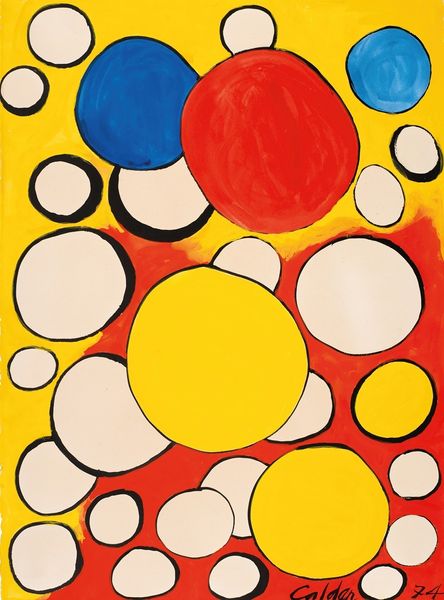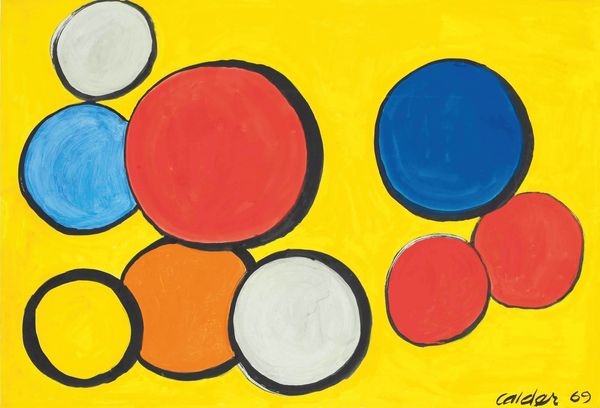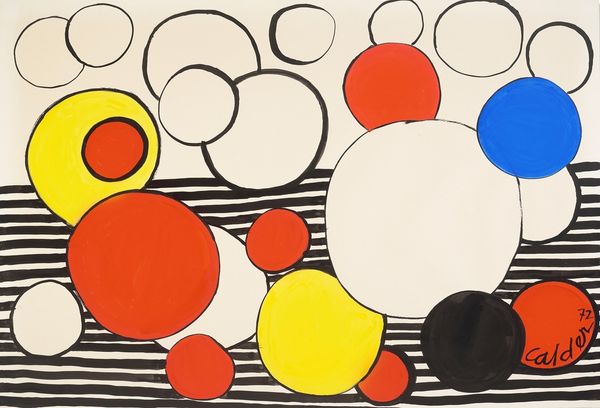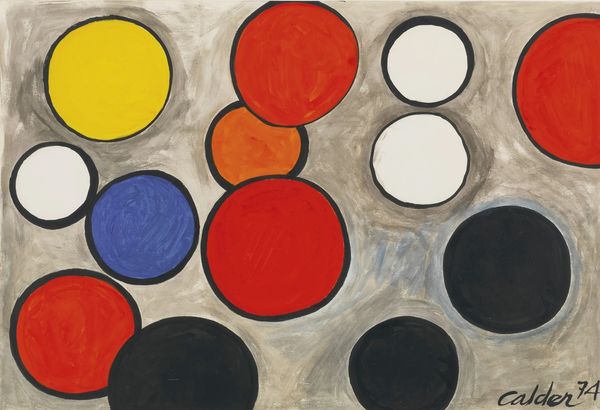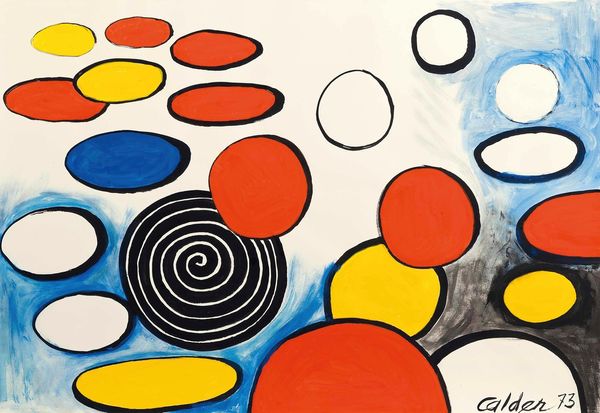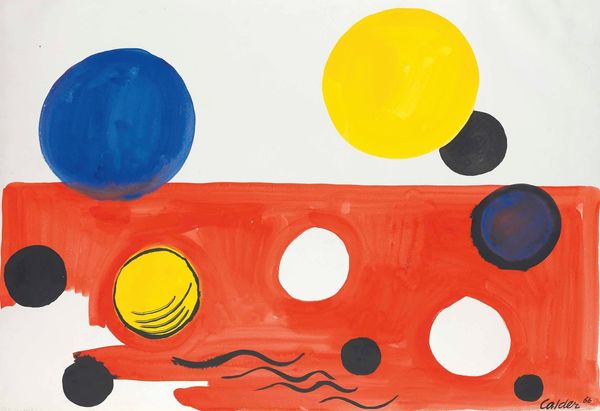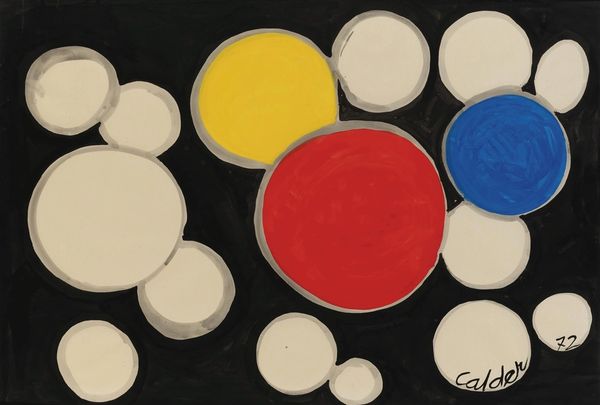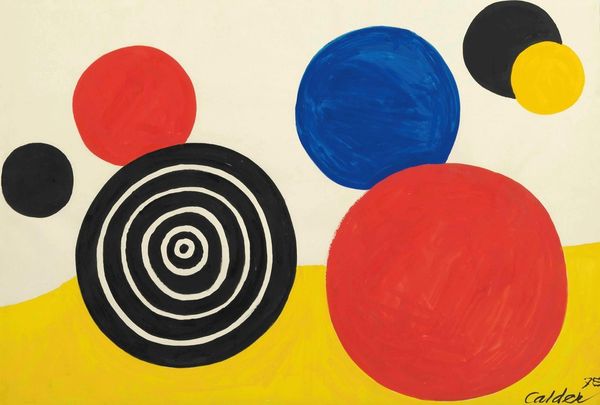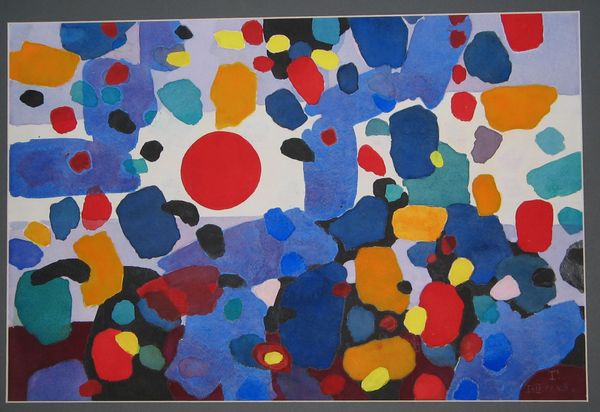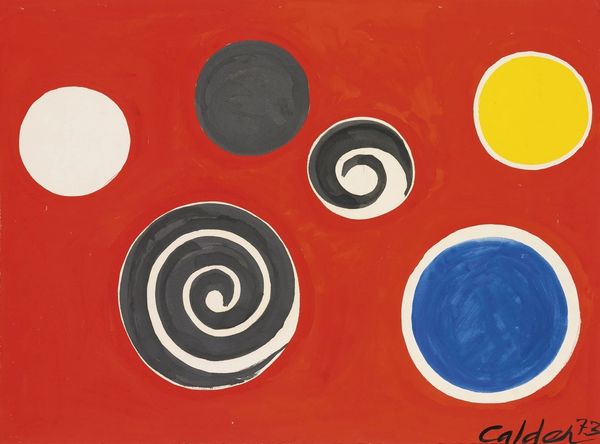
Copyright: Modern Artists: Artvee
Alexander Calder made this gouache on paper, entitled "Yale" in 1975, in the United States. The bright primary colours and simple shapes give the work an accessible, playful quality. But Calder came to art making through engineering, and his most famous works, the mobile sculptures, engage with the science of motion. This print can be understood in the context of the rise of American abstraction in the mid twentieth century. The Museum of Modern Art in New York played a key role in defining abstraction as the most important, forward looking direction in art. "Yale" reminds us that even seemingly simple or decorative artworks can connect to important histories of art and institutions. With further research, we can uncover how "Yale" relates to the cultural and economic conditions of its time.
Comments
No comments
Be the first to comment and join the conversation on the ultimate creative platform.
